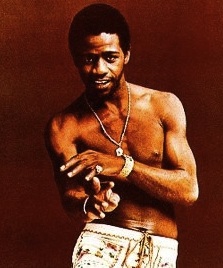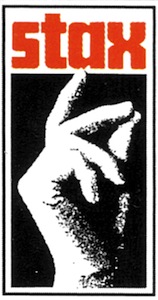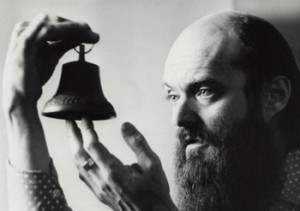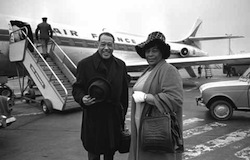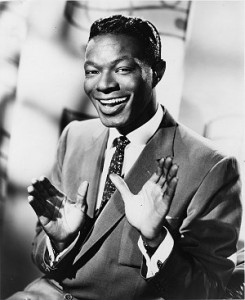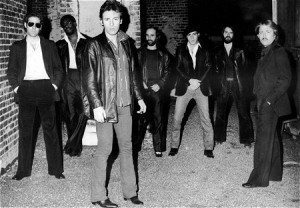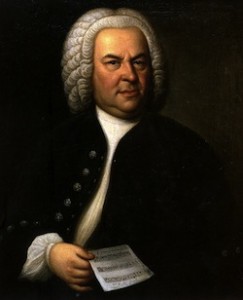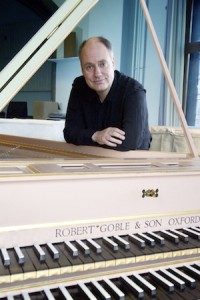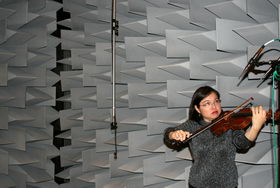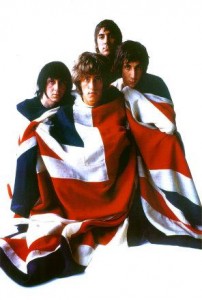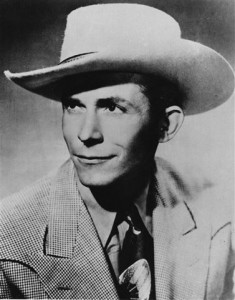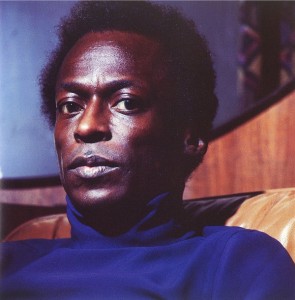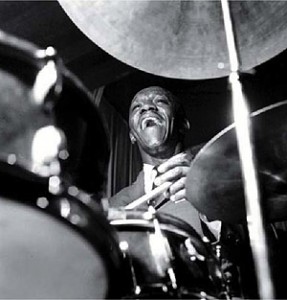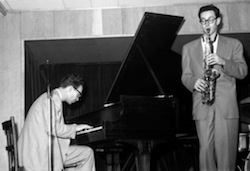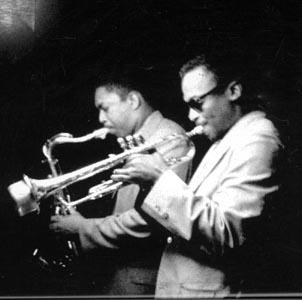 I spent a good part of last night and some time this morning listening to the earlier (Prestige) Miles Davis and John Coltrane set that I ripped last night and today. There were three boxes in all: The Miles Davis Quintet recordings (the first quintet with John Coltrane), ‘Fearless Leader’, the Coltrane Prestige recordings that featured Coltrane as the head of the group (also featuring Red Garland on piano) and ‘Interplay’ which is a Prestige set of recordings with John Coltrane in a supporting role. I am pretty sure I got all of these sets throughout a couple years for Christmas from Tamiko, and they mostly filled in holes from the music from these periods. The Miles Davis boxes (which encompass ‘Workin’ ‘, ‘Smokin’ ‘ and a few other Prestige discs) really are Miles Davis albums. Some of the quintessential cool Miles Davis before he starting doing more recordings for Columbia records. How cool? He does ‘Surrey With A Fringe On Top’ and it’s brilliant. There are other standards mixed in, and the music fuses into what may be Miles’ first REALLY solid group.
I spent a good part of last night and some time this morning listening to the earlier (Prestige) Miles Davis and John Coltrane set that I ripped last night and today. There were three boxes in all: The Miles Davis Quintet recordings (the first quintet with John Coltrane), ‘Fearless Leader’, the Coltrane Prestige recordings that featured Coltrane as the head of the group (also featuring Red Garland on piano) and ‘Interplay’ which is a Prestige set of recordings with John Coltrane in a supporting role. I am pretty sure I got all of these sets throughout a couple years for Christmas from Tamiko, and they mostly filled in holes from the music from these periods. The Miles Davis boxes (which encompass ‘Workin’ ‘, ‘Smokin’ ‘ and a few other Prestige discs) really are Miles Davis albums. Some of the quintessential cool Miles Davis before he starting doing more recordings for Columbia records. How cool? He does ‘Surrey With A Fringe On Top’ and it’s brilliant. There are other standards mixed in, and the music fuses into what may be Miles’ first REALLY solid group.
The two Coltrane boxes are quite interesting. Nothing on ‘Fearless Leader’ caught me by surprise… I owned a good number of the discs already covered in this set (‘Soultrane’ for instance) and they show Coltrane coming into his own both as a band leader and as THE saxophonist of his generation. There are moments of the brilliance that will come, but for the most part you can see him polishing his early talent. Again, some very cool recordings. But ‘Interplay’ introduced me to some music I hadn’t heard before. The stand out for me were the recordings with Mal Waldron who, for some reason, I hadn’t heard of until I head John Coltrane playing with him. And wow! What a great pianist. I can kind of understand why he was overshadowed at the time… not as idiosyncratic as Monk, and not as polished as Red Garland, but like the other two he has a genuinely unique voice that is recognizable.
The other interesting thing about ‘Interplay’ is there is a certain amount of performance tension that I head among groups that are more or less just getting together for some sessions. The players are figuring out what they are going to do while at the same time learning from other players that they have little experience with. There are a few times were someone tramples over someone else’s solo for instance, but I like the feeling of spontaneity that also comes out of these recordings. You still get lots of Coltrane, but you also get LOTS of others that you may not have heard of before. Fun box to say the least.
In fact, it was while listening to these boxes this morning and last night that the goal of this project – revisiting and rediscovering music that I have – really brought a smile to my face.


